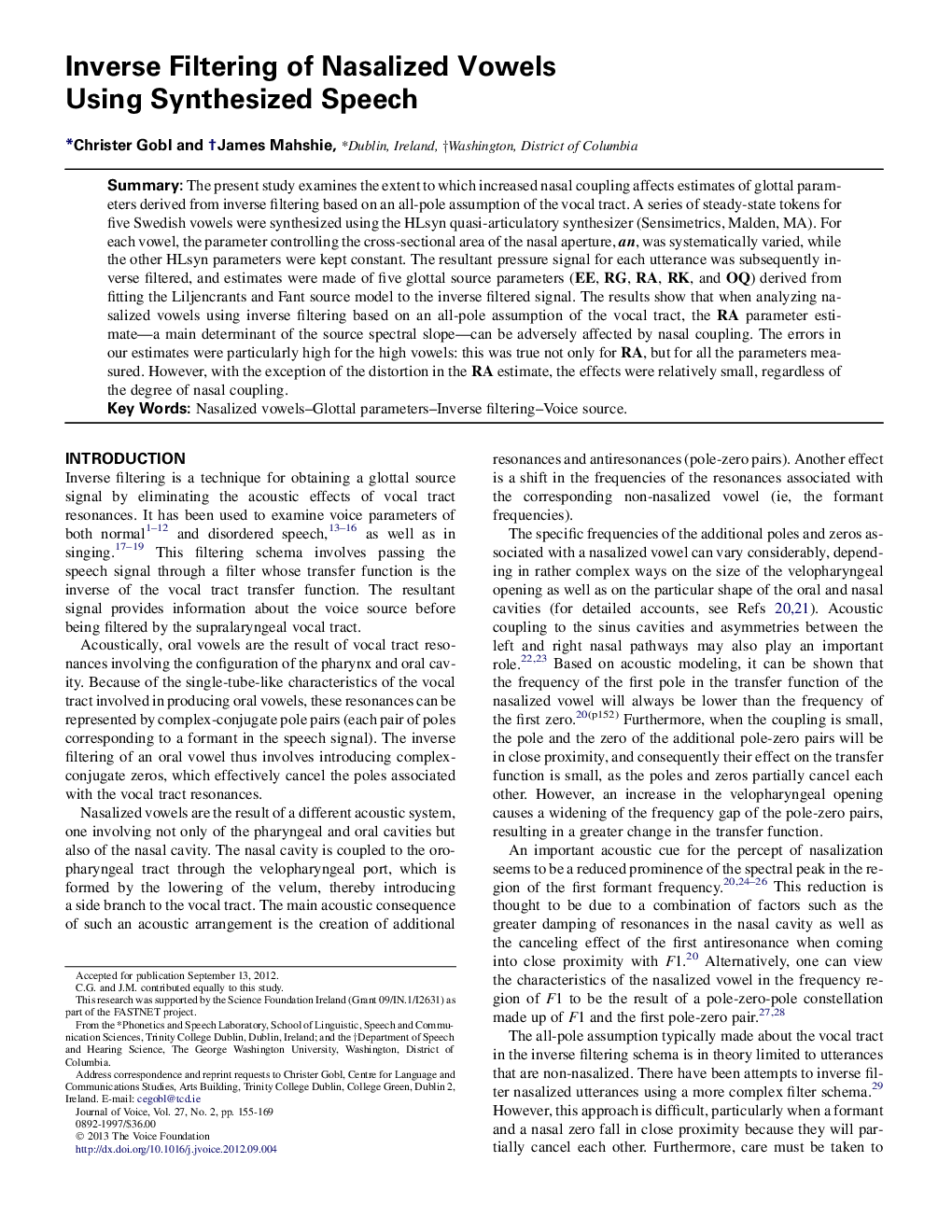| Article ID | Journal | Published Year | Pages | File Type |
|---|---|---|---|---|
| 1101436 | Journal of Voice | 2013 | 15 Pages |
SummaryThe present study examines the extent to which increased nasal coupling affects estimates of glottal parameters derived from inverse filtering based on an all-pole assumption of the vocal tract. A series of steady-state tokens for five Swedish vowels were synthesized using the HLsyn quasi-articulatory synthesizer (Sensimetrics, Malden, MA). For each vowel, the parameter controlling the cross-sectional area of the nasal aperture, an, was systematically varied, while the other HLsyn parameters were kept constant. The resultant pressure signal for each utterance was subsequently inverse filtered, and estimates were made of five glottal source parameters (EE, RG, RA, RK, and OQ) derived from fitting the Liljencrants and Fant source model to the inverse filtered signal. The results show that when analyzing nasalized vowels using inverse filtering based on an all-pole assumption of the vocal tract, the RA parameter estimate—a main determinant of the source spectral slope—can be adversely affected by nasal coupling. The errors in our estimates were particularly high for the high vowels: this was true not only for RA, but for all the parameters measured. However, with the exception of the distortion in the RA estimate, the effects were relatively small, regardless of the degree of nasal coupling.
